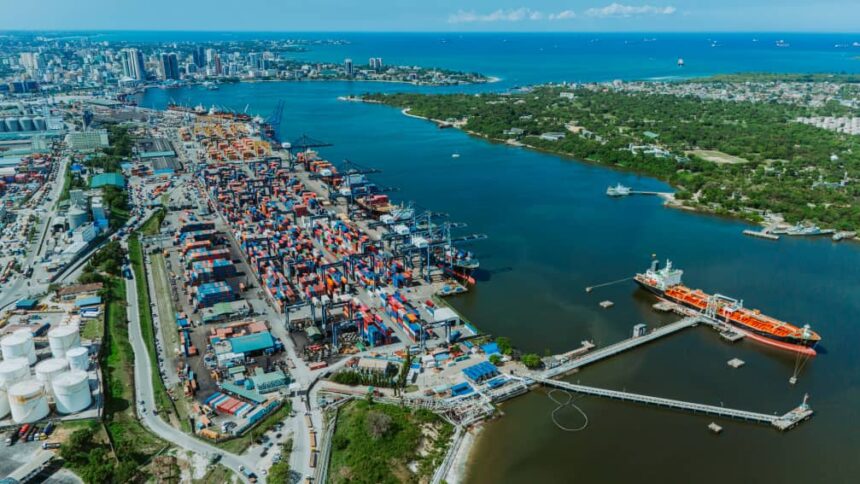As the African Continental Free Trade Area (AfCFTA) continues to gain momentum, Tanzania has achieved a significant milestone in enhancing its trade infrastructure. The Dar es Salaam Port, one of East Africa’s busiest maritime hubs, has introduced Fixed Berthing Windows (FBW) at Terminal 2, a transformative move poised to revolutionize the future of port operations and regional trade. This development signals a major step toward modernizing Tanzania’s maritime logistics sector and strengthening its position as a key player in African trade.
A Game-Changer for Port Efficiency
Tanzania East Africa Gateway Terminal Limited (TEAGTL), the private operator of Terminal 2, successfully implemented the Fixed Berthing Windows concept, which is widely regarded as an industry best practice. Unlike the traditional first-come-first-served system, the FBW approach introduces a structured method of pre-assigned berthing slots for vessels. This innovation reduces waiting times at the port, enhancing efficiency and service delivery—key factors that improve the overall competitiveness of Tanzania’s maritime industry.
Plasduce Mbossa, Director General of the Tanzania Ports Authority (TPA), praised the launch, describing the FBW as a significant milestone. He emphasized that the reform strengthens Tanzania’s competitiveness as a regional trade hub, marking a major leap forward in modernizing the country’s maritime ports sector.
“This initiative is a testament to TPA’s unwavering commitment to partnering with TEAGTL to develop a world-class port ecosystem at Dar es Salaam Port,” said Mbossa. “It accelerates Tanzania’s trade and economic growth, supporting our broader national development vision.”
Shaping Tanzania’s Maritime Future
Shahzad Athar, Director at TEAGTL, highlighted the transformative nature of the FBW system, noting that its implementation is not just an operational improvement but a shift in how trade is facilitated at the national level. By introducing more predictable schedules for berthing, Tanzania’s shipping lines are able to plan more efficiently, thus enhancing the country’s global competitiveness.
“Our goal is to instill confidence and improve efficiency, especially for Tanzania’s manufacturing and perishables sectors,” said Athar. “The FBW system enhances supply chain visibility for both exporters and importers, reduces inventory levels, and makes Tanzanian products more competitive in global markets.”
The introduction of Fixed Berthing Windows comes at a crucial time, as delays at preceding ports can have a cascading effect, affecting port performance at subsequent locations. This system ensures that vessels spend less time waiting to dock, improving the overall integrity of global supply chains.
The Positive Impact on Trade Volumes
The early results of the FBW implementation have been impressive. In just three months, TEAGTL has served over 32 percent of the 65 vessels handled at Terminal 2 under the Fixed Berthing Windows system, with the proportion growing each month. By March, the coverage reached 48 percent, and the terminal aims to achieve 75 percent FBW coverage by the end of May, signaling increasing adoption and confidence from major shipping lines.
“The progressive implementation of the FBW system is a clear indication of the growing confidence in this system among key stakeholders,” said Mohamed Salum, Director General of Tanzania Shipping Agencies Corporation (TASAC). “This initiative supports TASAC’s mandate to promote safe, secure, and environmentally sound shipping practices, which will enhance Tanzania’s competitiveness in global trade.”
Enhancing Cold-Chain Logistics for Global Exports
Another important aspect of the reform is the expansion of Tanzania’s reefer plug capacity to cater to the growing demand for cold-chain logistics. This development is particularly crucial for the export of high-value agricultural products, such as avocados, where maintaining freshness is key to meeting international market standards. The combined efforts of the FBW system and enhanced cold-chain infrastructure are set to provide Tanzanian exporters with a competitive advantage, making their products more attractive in global markets.
Tanzania’s Role as a Regional Gateway
The impact of the reforms at Dar es Salaam Port extends far beyond Tanzania’s borders. The port serves as a vital trade and transit gateway for neighboring countries, including Uganda, the Democratic Republic of Congo, Burundi, Rwanda, Zambia, and Malawi. By improving the port’s efficiency, Tanzania is solidifying its position as a key hub for regional trade, further integrating these countries into the growing African trade network.
The introduction of Fixed Berthing Windows at the Dar es Salaam Port marks a pivotal moment in the modernization of Tanzania’s logistics sector. By enhancing efficiency, reducing vessel waiting times, and improving predictability, the FBW system is set to play a crucial role in bolstering regional trade under the AfCFTA. With ongoing reforms, the port is poised to serve as a major catalyst for economic growth, not just in Tanzania but across the East African region.
As this transformative initiative continues to unfold, it’s clear that Tanzania is positioning itself as a major player in Africa’s trade and maritime future. The reforms at Dar es Salaam Port are a testament to the power of innovation and strategic partnerships in driving progress toward a more interconnected and prosperous African continent.






